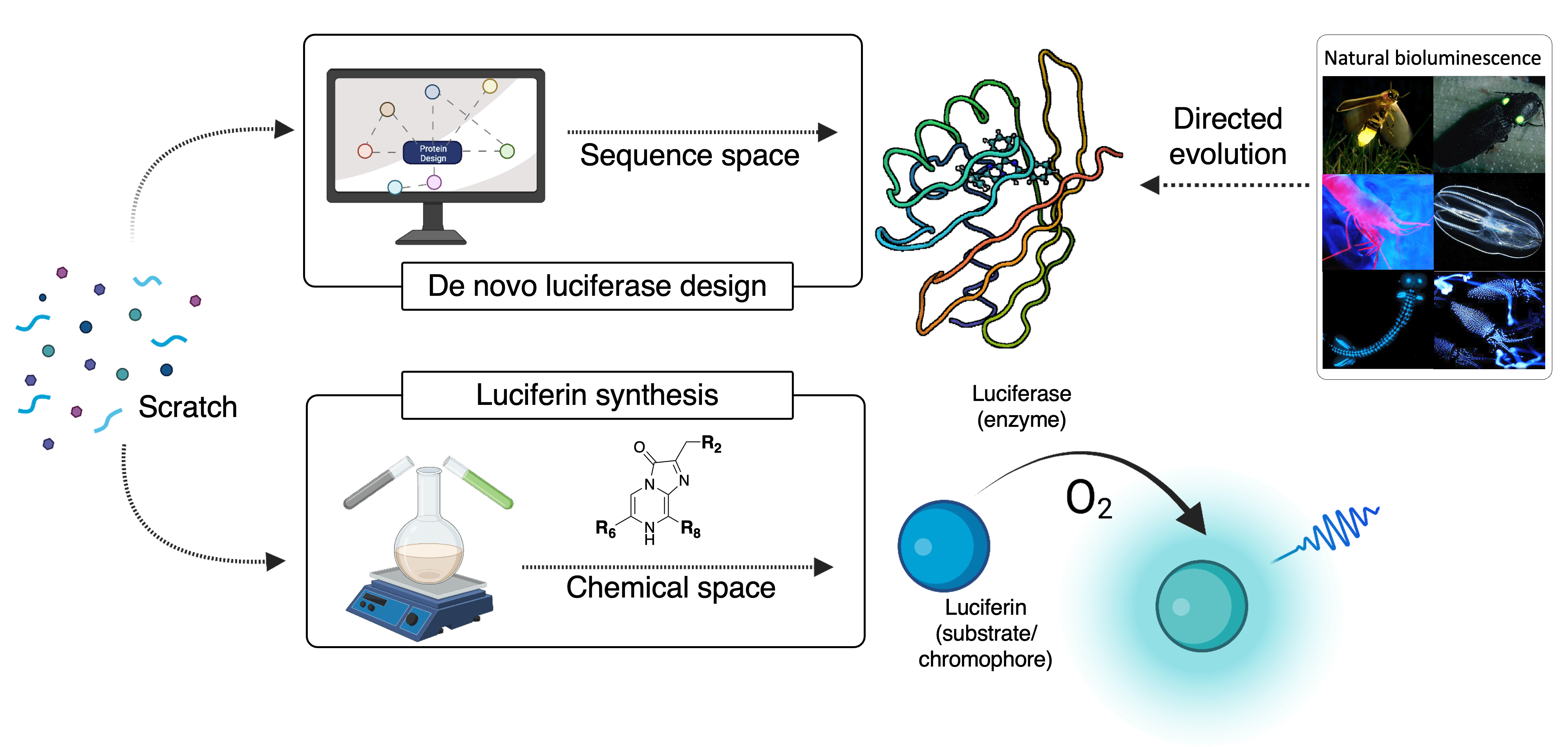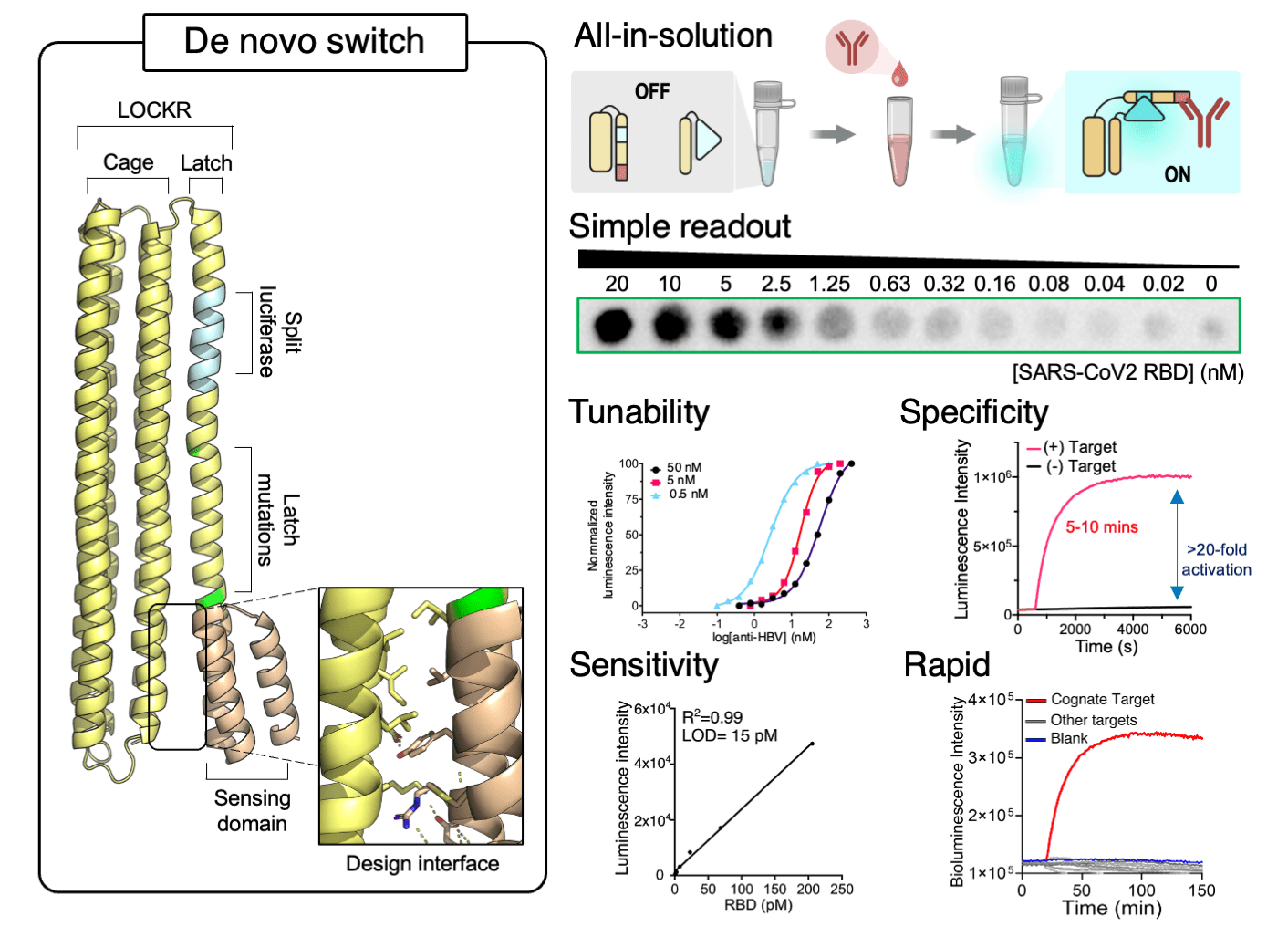De novo Protein Design
The total protein sequence space is vast (~20200) in which natural evolution has sampled only a tiny fraction of all possible sequences (~1012). To address the 21st-century biomedical challenges, we believe the proteins that do not present in nature can potentially provide immediate solutions.
Designing Biological Light from Scratch

Optical imaging modality has revolutionized and accelerated the discovery of new biology at the molecular level. Among all optical probes, luciferase-catalyzed chemiluminescence emission requires no external light to excite the chromophore, outperforming those popular fluorescent dyes/proteins in many aspects such as in vivo imaging and diagnostics. However, the development of luminescent probes lagged behind those well-established fluorescent proteins. The main reason is natural bioluminescent species are limited in number so there are only a handful of luciferases have been identified. With the advance in de novo protein design, we can now design luciferases from scratch that are tailored for a chosen synthetic luciferin, thereby generating artificial luciferase-luciferin pairs. We aim to leverage the computational protein design approach (protein sequence space) and organic synthesis (chemical space) to develop next-generation luminescent probes for vast biomedical applications.
Modular and Customizable Protein Biosensors

Protein biosensors have emerged as a promising class to measure biological activity. Engineering of natural proteins into sensor proteins requires extensive efforts because finding analyte-binding proteins that undergo sufficient conformational changes and coupling the changes effectively to a reporter domain are challenging. We use a de novo protein switch system to design protein sensors that are exceptionally stable, easy to produce, and highly modular to enable their simple repurposing for the detection of vast analytes of interest. We seek to develop an array of protein biosensors for (1) various disease biomarkers to identify new diagnostics, and for (2) bioimaging to gain a deeper fundamental understanding of biological questions.
Perspectives
We are also interested in designing synthetic protein circuits to program and sense the biological behavior of cells, which can be extended to develop safer and more effective cell therapy.
